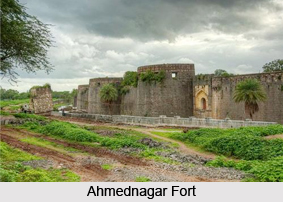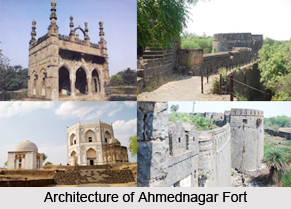 Ahmednagar Fort is situated in Ahmednagar city in the state of Maharashtra. The fortress served as the headquarters of the Ahmednagar Sultanate. During the Second Anglo Maratha War, the fort was conquered by the army of the British East India Company in 1803. The structure was transformed into a prison during the rule of the British Empire in India. Presently, Ahmednagar Fort is owned and maintained by the Armoured Corps of the Indian Army.
Ahmednagar Fort is situated in Ahmednagar city in the state of Maharashtra. The fortress served as the headquarters of the Ahmednagar Sultanate. During the Second Anglo Maratha War, the fort was conquered by the army of the British East India Company in 1803. The structure was transformed into a prison during the rule of the British Empire in India. Presently, Ahmednagar Fort is owned and maintained by the Armoured Corps of the Indian Army.
History of Ahmednagar Fort
Ahmednagar Fort was built in 1427 CE by Malik Shah Ahmed who was the first sultan of the Ahmadnagar Sultanate (Nizam Shahi dynasty). He founded the fortress in order to protect the city from attacks of the enemy forces. The structure was originally constructed as a mud fort. However later it was rebuilt with stone and the fortification were strengthened during the rule of Hussain Nizam Shah in 1559. The stone fortress was completed after three years in 1562.
The fort at Ahmednagar was attacked by the army of Mughal dynasty in 1596 but it was successfully defended by Chand Bibi who was the queen regent. Eventually the Mughal forces conquered the structure in 1600. On 20 February 1707, Mughal Emperor Aurangzeb died at Ahmednagar fort. Then the fortification was handed over to the Nizams in the year 1724. It was also occupied by the army of the Maratha Empire in 1759 and by the Scindias in 1790.
The fortress and the neighboring regions were ceded to Daulat Scindia after the death of Madhavrao II. However, the Maratha army was defeated by the forces of the British East India Company in 1803 during the Second Anglo Maratha War and Arthur Wellesley occupied the fort. The British Government of India used the structure as a prison. Several Indian Freedom Fighters were imprisoned here namely Sardar Vallabhbhai Patel, Maulana Abul Kalam Azad, Jawaharlal Nehru and some renowned members of Indian National Congress Party.
Architecture of Ahmednagar Fort
In 1803, Ahmednagar Fort was a round shaped structure that consisted of with 24 bastions, 3 small sally ports and a large entrance. The fort also had a glacis with stone on both sides around 5.5 m wide. The berm was almost one yard in width. The rampart of the fort was built with black hewn stone. The rampart and the parapet appeared from the crest of the glacis. The fort bastions were round in shape and were around 4 feet high. Each bastion in the fortress included two guns.
The main entrance of Ahmednagar Fort faced the Pettah of Ahmednagar. The gateway was guarded by a small half-circular work with several towers for guards. A wooden bridge was also present over the ditch. This bridge could be moved during battles, although it was not a draw-bridge. A number of mosques and pagodas were also situated in the nearby area of Ahmednagar Fort.
Present Condition of Ahmednagar Fort
Ahmednagar Fort presently lies in a state of disrepair. The structure is under the administration of the Armoured Corps of the Indian Army. The site is not open to general people and tourists.



















